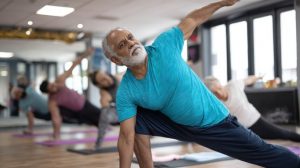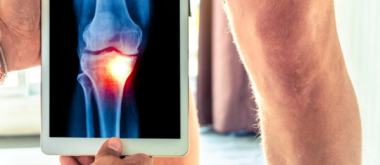People living with knee osteoarthritis may find the greatest relief from aerobic activities such as walking, cycling, or swimming, according to a new study published in The BMJ. Researchers found that these forms of exercise were most effective at reducing pain, improving mobility, and increasing overall quality of life.
Although other sports may offer additional benefits, the researchers emphasized that aerobic activities should remain the basis of treatment. Osteoarthritis occurs when the cartilage that cushions the ends of the bones wears away, leading to swelling, stiffness, and discomfort. It can affect any joint, but the knees are most commonly affected. About 30% of adults over the age of 45 show signs of knee osteoarthritis on X-rays, and about half of them suffer from severe pain and mobility problems.
Aerobic Exercise Offers the Greatest Benefits for Knee Osteoarthritis
Exercise is a cornerstone of osteoarthritis treatment, but many medical guidelines do not provide clear guidance on which types of exercise are most beneficial for knee osteoarthritis in particular. To clarify this, researchers analyzed the effectiveness and safety of various exercise approaches. Their comprehensive analysis was based on 217 randomized clinical trials conducted between 1990 and 2024. In total, the study included 15,684 participants and compared several exercise categories—including aerobic, flexibility, strength, mind-body, neuromotor, and mixed programs—with control groups.

The studies varied in quality, but the team assessed the strength of the evidence using the internationally recognized GRADE system. They examined several key outcomes: pain relief, physical function, gait performance, and quality of life. Each outcome was measured at short-term (four weeks), medium-term (12 weeks), and long-term (24 weeks) follow-ups. In all studies, aerobic exercise consistently achieved the best results among all types of exercise tested.
With moderate certainty, aerobic exercise was shown to be effective in reducing pain and improving function in both the short and long term compared to the control groups. It also improved gait performance and quality of life in the short and medium term. Other forms of exercise also showed benefits. Mind-body workouts probably led to a significant improvement in short-term function, neuromotor exercises probably improved short-term walking performance, and strength or mixed training programs improved function in the medium term.
Safe and Effective for Long-Term Use
Importantly, none of the types of exercise led to more adverse events than the control groups, suggesting that these therapies are generally safe. The authors acknowledged some limitations of the study. Many results came from indirect comparisons, long-term data were lacking for certain outcomes, and smaller studies may have influenced some early results.
Despite these limitations, the researchers describe their work as one of the most comprehensive and up-to-date evaluations of exercise for the treatment of knee osteoarthritis. They believe the findings will help physicians make more targeted recommendations. Based on the available evidence, the team recommends aerobic exercise “as a first-line treatment for knee osteoarthritis, especially when the goal is to improve function and reduce pain” and says that if cardio exercise is not possible due to individual limitations, “alternative forms of structured physical activity may still be beneficial.”





